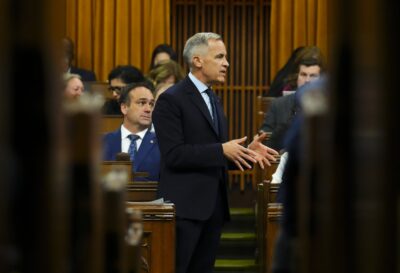Budget watchdog says he’s in the dark on Ottawa’s fiscal targets
By Canadian Press on June 19, 2025.

OTTAWA — The parliamentary budget officer said Thursday he can’t properly assess whether the federal government is on track to meet its fiscal targets because the Liberals’ new budget benchmarks haven’t been defined.
Without a spring budget, that means Ottawa’s budgetary watchdog is in the dark on how recently announced plans to boost Canada’s defence spending and cut income taxes will affect the government’s fiscal position.
Prime Minister Mark Carney announced a plan before the spring election to split Ottawa’s budget into operating and capital streams, and to balance the operating side in three years.
Parliamentary budget officer Yves Giroux said in an updated economic and fiscal monitor report that the Liberals haven’t yet defined what will be included in this operating budget.
“Without a clear definition of what counts as operating spending, it’s impossible to evaluate whether the government is on track to meet its new fiscal anchor,” Giroux said in a media statement.
Carney announced plans earlier this month to reach the NATO defence spending target of two per cent of GDP this fiscal year with $9.3 billion in new funding — a rapid expansion of his own previous promise to hit those levels by the end of the decade.
The prime minister promised $4.3 billion in aid for Ukraine at the G7 summit earlier this week.
The federal government also has introduced plans for a one-percentage-point cut to the bottom income tax bracket, which the PBO pegged at a net cost of $28 billion over five years in a separate report released Wednesday.
The government’s old fiscal anchors were based on keeping annual budget deficits below one per cent of GDP and keeping debt-to-GDP on a declining path over the medium term.
The PBO’s latest report notes that the federal government could hit its operating budget targets but still see the debt-to-GDP ratio rise due to additional borrowing to fund, for example, accelerated military spending.
“This means that the government could achieve its fiscal objective and yet be fiscally unsustainable,” the report says.
Parliamentarians “may wish to seek additional clarity” on how the government intends to define these measures and keep federal finances stable, the report concludes.
The PBO does say the federal government’s deficit for the last fiscal year likely came in at $46 billion, roughly $4.3 billion lower than estimates in March, thanks in part to higher corporate tax revenues and the imposition of counter-tariffs on the United States.
The office’s updated economic and fiscal projections predict economic growth will stall in the second quarter as Canada’s trade war with the United States sinks exports.
This report by The Canadian Press was first published June 19, 2025.
Craig Lord, The Canadian Press
19-18




